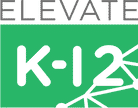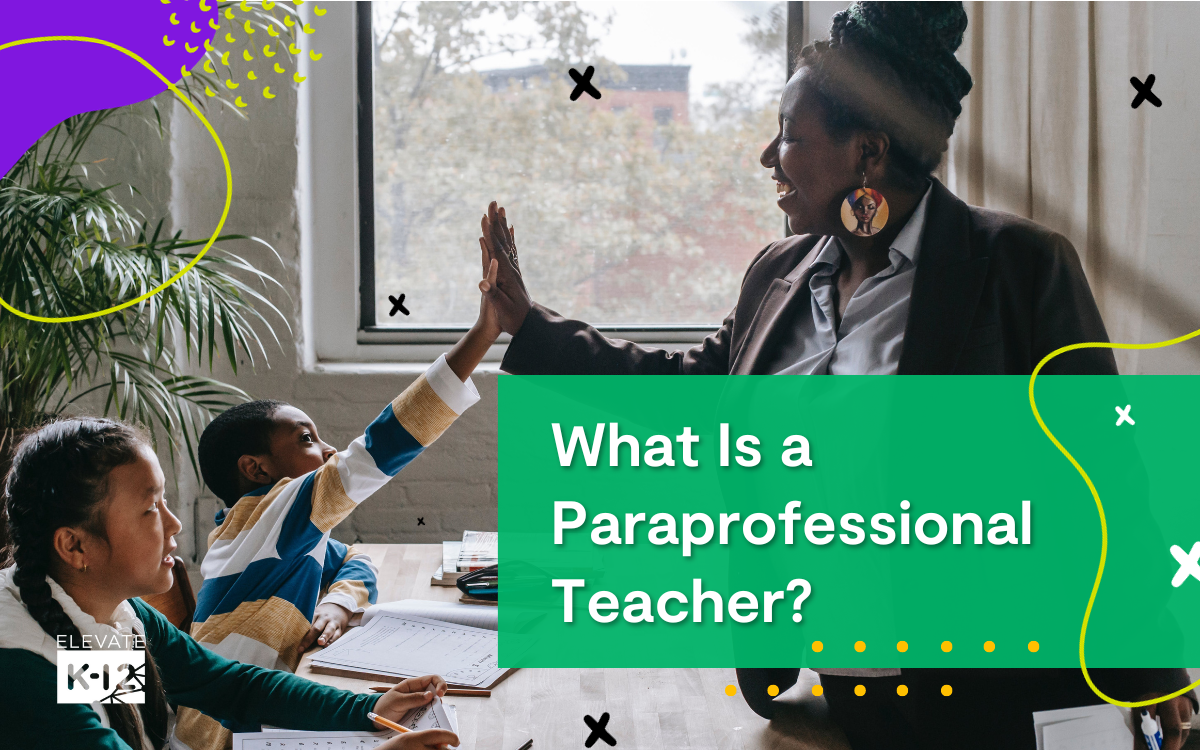Paraprofessionals are classroom support staff — but that definition somewhat minimizes the incredible impact they can have in school systems.
Paraprofessionals assist teachers, give students one-on-one attention, complete administrative work, and grading, and play a vital role in achieving positive student outcomes. With over one million paraprofessional teachers employed across the United States, most of them full-time, these roles are indispensable in public schools.
In the midst of a nationwide teacher shortage, paraprofessionals help bridge the gaps and ensure both educators and students get the support they need.
What Is a Paraprofessional Teacher?
Put simply, paraprofessional teachers work in schools and assist with teaching responsibilities. They can work at any grade level, from elementary to high school, and help with any subject, from English to math to special education.
Their responsibilities can include anything from grading to one-on-one tutoring. On a limited basis, they can even conduct a class alone when the lead teacher is absent.
Schools often place paraprofessional teachers in classes that need extra support. Whether it’s a large class or a class that includes students with Individualized Education Programs (IEP), paraprofessionals can provide vital assistance to both students and teachers.
With fewer qualifications than certified teachers, becoming a paraprofessional teacher has a lower barrier to entry.
Paraprofessional Teacher vs. Teaching Assistant
Paraprofessional teachers and teacher assistants are interchangeable titles for essentially the same roles. Both provide classroom assistance to certified teachers and require the same qualifications. Other terms for the role include classroom assistant, instructional aide, teacher’s aide, or just “para” for short.
Responsibilities of a Paraprofessional Teacher
Paraprofessional teachers must be versatile and flexible. They collaborate with teachers and cover a range of responsibilities to support learning.
Classroom Instruction
Working alongside teachers, paraprofessionals can offer traditional classroom instruction. They can deliver lessons and provide interventions to support individual students who may need extra help. They can even help provide classroom services for special needs learners with IEPs.
Individualized Tutoring
Outside of the classroom, paraprofessional teachers can provide additional tutoring for individual students. They can help students who are behind catch up to the rest of the class through one-on-one learning sessions or in small groups.
This individual attention can help students feel seen and supported. It can also be an opportunity to spot areas that require more substantial intervention.
Lesson Planning and Preparation
To support teachers and reduce their workloads, paraprofessional teachers can help plan lessons that are aligned with the school curriculum. Since lesson planning is one of the most time-consuming parts of teaching, this support can allow teachers to focus on providing great instruction.
Assessment and Evaluation
On the other end, paraprofessional teachers often grade homework, assignments, and tests. They can also help track data on learner outcomes to evaluate overall performance and even administer quizzes, exams, and standardized tests.
Miscellaneous Paraprofessional Duties
Managing a classroom includes a high number of administrative tasks. Whether taking attendance, completing paperwork, or helping with general classroom management, paraprofessional teachers are always ready to step in and assist.
Does a Paraprofessional Need a Teaching Degree?
Paraprofessionals require fewer qualifications than certified teachers. They do need a high school diploma or equivalent, and some states may also require an associate’s degree in education or a related field. However, paraprofessional teachers don’t need bachelor’s or master’s degrees or special certificates to qualify.
That doesn’t mean paraprofessionals don’t need qualifications. Potential candidates should be caring and patient and have a desire to help others. They must demonstrate an ability to assist in teaching subjects like English and math. Some states require paraprofessionals to complete a parapro assessment to prove their skills.
Paraprofessionals may continue to complete professional development as they work. Schools should include them in training programs, seminars, and meetings where they can further develop their skills to better meet student needs.
Benefits of a Paraprofessional Teacher in the Classroom
The presence of a paraprofessional teacher is a massive help to regular certified classroom teachers. This extra support can help prevent burnout — one of the primary causes of the teacher shortage. It also gives students more opportunities for help in learning.
Reduced Teacher Workload
Teachers work, on average, 50+ hours a week. These long days lead to stress and a poor work-life balance — another factor contributing to the nationwide teacher shortage.
Providing paraprofessional support is an important strategy for reducing teacher workloads, preventing burnout, and keeping teachers from leaving the profession.
The extra help also allows licensed teachers to focus on the critical things. When support staff can take over tasks like grading and planning, certified teachers can focus more on delivering great lessons and meeting their students’ needs.
Enhanced Classroom Environment
An additional professional in the classroom can help foster a positive learning environment. Extra support in teaching and classroom management improves overall classroom morale and reduces anxiety and frustration.
Paraprofessionals can also offer one-on-one attention that helps build student trust and improve engagement. In addition, this gives students two potential teaching styles to connect to, providing them with more opportunities to learn in the way that works for them.
Improved Student Outcomes
Research supports the positive impact of paraprofessional teachers on student outcomes. When students have more access to one-on-one attention, they have more opportunities to get the help they need and succeed in class. Two professionals are also better than one when planning lessons and managing the classroom.
The extra support paraprofessionals provide also benefits students who are behind because of special needs, lack of access to resources, or staffing shortages. When these students receive the additional attention they need, it leads to positive student progress and reduces achievement gaps.
Increased Individualized Attention
Paraprofessional teachers often conduct one-on-one tutoring sessions outside of classrooms. They can also intervene at the moment to help students who are struggling. This allows students to get more individualized attention while the rest of the class continues to learn.
Inclusive Learning Environment
The Every Student Succeeds Act (ESSA) requires schools to support historically disadvantaged students in overcoming achievement gaps. This includes students with disabilities and students with limited English language skills.
Paraprofessional teachers can help make learning environments more inclusive of students with different abilities and assist schools in achieving the aims of ESSA.
Extra help and more individual attention can ensure that each classroom is a space where all students have the support to succeed. With more support, some students can stay in a general education classroom rather than going to a special education classroom.
Bilingual paraprofessional teachers can also support English language learners in regular classrooms, providing translation and assistance when needed.
Explore How Elevate Is Revolutionizing Classrooms With Paraprofessionals
The presence of a paraprofessional teacher is a core part of Elevate K-12’s teaching model. We recognize their value in the classroom and believe in powerful collaboration between certified teachers and talented paraprofessional teachers.
Elevate takes care of the difficult task of finding a remarkable certified teacher for districts in need. Our remote, virtual teachers lead LIVE synchronous classes in districts with teacher shortages. With the difficult task of finding a certified teacher out of the way, districts only have to focus on finding paraprofessionals to create an excellent classroom experience.
Through our interaction-rich software, the virtual live teacher can collaborate with a district-provided paraprofessional teacher who is present in the classroom. Together, they can provide a comprehensive educational experience that addresses each student’s needs and promotes positive student outcomes.

